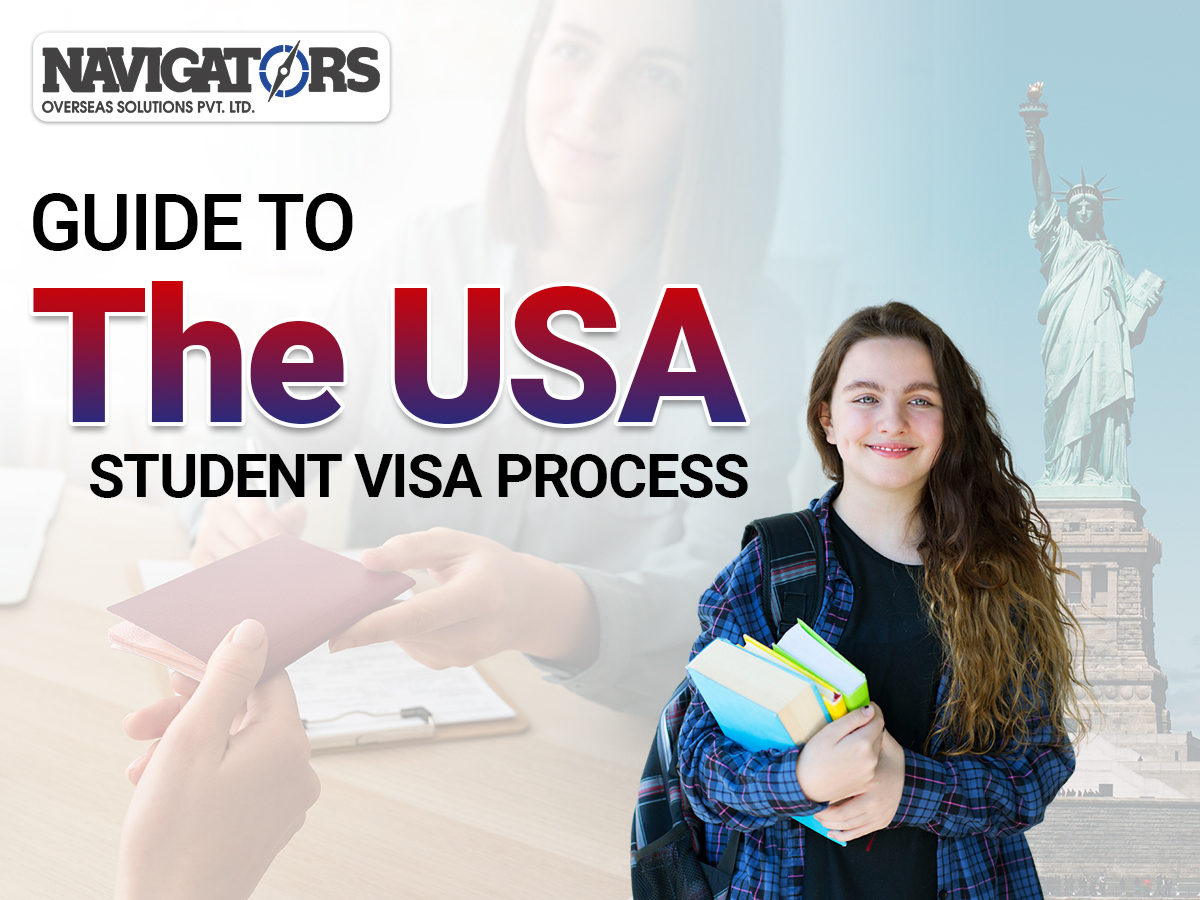- SCO 99, Sector 44-C, Chandigarh, India-160047
- +91 98090 90908
- navigators@ymail.com

Are you dreaming of studying in the United States? If so, obtaining a student visa is a crucial step in making that dream a reality. The USA student visa process may seem complex, but with the right guidance, you can navigate it smoothly. This article will walk you through each step of the process, from choosing an SEVP-approved school to receiving your visa.

The first step in the USA student visa process is applying to a school that is certified by the Student and Exchange Visitor Program (SEVP). These schools are authorized to accept international students. Once accepted, the school will provide you with a Form I-20, which is essential for your visa application.
Key Points:

Before you can apply for your student visa, you must pay the SEVIS (Student and Exchange Visitor Information System) fee. This fee is required to fund the system that tracks your status as a student in the USA. Make sure to keep the receipt, as you’ll need it during the visa application process.
Key Points:

The DS-160 form is an online application for a nonimmigrant visa. It requires personal details, information about your travel plans, and your educational background. Completing this form is a critical part of the USA student visa process.
Key Points:

After completing the DS-160 form, you must schedule a visa interview at the U.S. embassy or consulate in your country. It’s important to book your appointment early, as interview slots can fill up quickly.
Key Points:

Preparation is key to a successful visa interview. Gather all necessary documents, such as your passport, Form I-20, DS-160 confirmation page, SEVIS fee receipt, and proof of financial stability. Being well-prepared will help you feel more confident during the interview.
Key Points:

On the day of your interview, arrive at the U.S. embassy or consulate on time and with all your documents. During the interview, the consular officer will ask you questions about your study plans, financial situation, and intentions to return to your home country after your studies.
Key Points:

If your visa is approved, the consular officer will keep your passport to attach the visa. Your passport, with the visa included, will be returned to you within a few days. Once you receive it, double-check the visa details to ensure everything is correct.
Key Points:
The USA student visa process may seem daunting, but by following these steps, you can navigate it successfully. From choosing an SEVP-approved school to attending your visa interview, each step brings you closer to achieving your educational goals in the United States. Remember to stay organized, prepare thoroughly, and approach the process with confidence.
An SEVP-approved school is certified by the Student and Exchange Visitor Program to accept international students. Attending such a school is crucial because only these institutions can issue the Form I-20, which is required for your F-1 visa application.
The SEVIS fee for F-1 students is $350. You should pay this fee after receiving your Form I-20 but before submitting your visa application. Be sure to keep the receipt, as you’ll need it for your visa interview.
You will need your valid passport, Form I-20, DS-160 confirmation page, SEVIS fee receipt, proof of financial stability, passport-sized photos, and any academic records that support your application. It’s also wise to bring proof of ties to your home country.
The timeline can vary, but it typically takes a few weeks to a couple of months from the time you receive your Form I-20 to the day you receive your visa. Scheduling your visa interview early can help avoid delays.
Yes, F-1 students can work on-campus for up to 20 hours per week during the academic year and full-time during breaks. Off-campus work opportunities, like Optional Practical Training (OPT), are available but require authorization from the U.S. Citizenship and Immigration Services (USCIS).